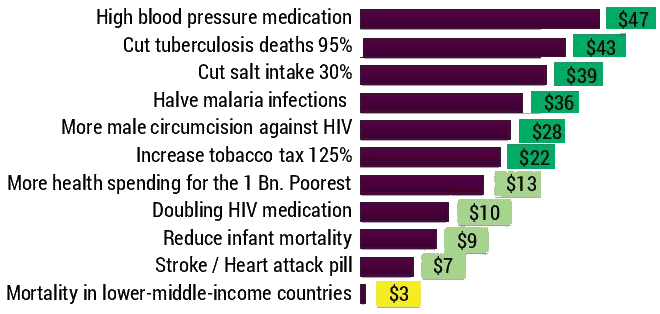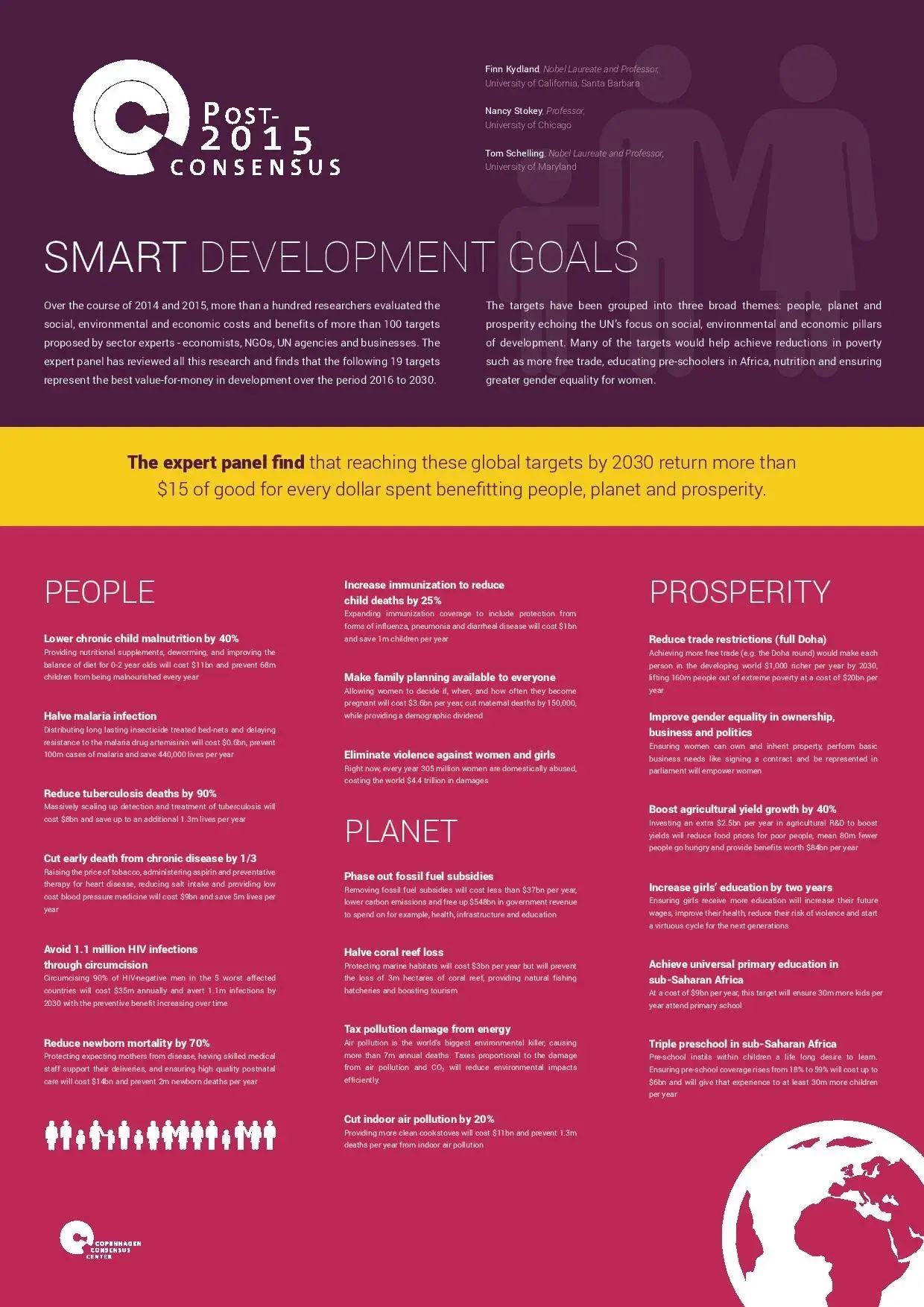Infectious Diseases: What is the smartest SDG target?

As of late December, 7,373 people have died from the Ebola virus, 99% of which have occurred in three West-African countries Liberia, Sierra Leone and Guinea. It is a terrible affliction, but there are other diseases that are much more deadly.
According to the WHO, the latest yearly figures indicate that in these three countries, 5,625 have died from malaria, 7,900 from tuberculosis (TB) and 11,200 from HIV/AIDS. Of course, across the world these numbers are vastly greater with global annual deaths for each disease at 584,000 for malaria and approximately 1.5 million each for TB and HIV/AIDS.
As reported in The Guardian, there are effective, clear strategies and targets that would dramatically reduce the burden of these deadly diseases.
For malaria, the recommendation is to reduce resistance to artemisinin – the primary drug treatment for malaria – by using combination therapies, while providing bed-nets to reduce infection. Each dollar invested returns $36 in benefits.
For TB, the author suggests intensifying efforts to identify TB carriers, particularly among those co-infected with HIV, while scaling up treatment to both regular and drug-resistant strains of TB. Each dollar invested returns $43 in benefits.
For HIV/AIDS, to get the best bang-for-buck the authors suggest focusing on hyper-endemic (15%+ of adult population infected) regions in Africa, and in particular those with the weakest immune systems. By providing treatment to the most susceptible, and also circumcising 90% of HIV-negative men, we can return $10 and $28 respectively, for every dollar spent.
You can read all the papers on infectious diseases here and download the one page PDF here.
The smartest targets for the post-2015 development agenda
What are the smartest targets for the post-2015 development agenda?
In a world of limited resources, we can’t do everything, but how should we prioritize? The Copenhagen Consensus Center provides information on which targets will do the most social good relative to their costs. The final decision on choosing goals will definitely rest on a number of factors, not just economics – but knowing the costs and benefits provides an important piece of information.
The Post-2015 Consensus brought together, renowned experts from the UN, NGO and private sectors with 60 teams of economists to produced 100+ research papers to establish the most effective targets for the post-2015 development agenda within 22 core issue areas: Air Pollution, Biodiversity, Climate Change, Conflict & Violence, Data for Development, Education, Energy, Food Security, Gender Equality, Governance & Institutions, Health: Chronic Diseases, Health: Health Systems, Health: Infant Mortality & Maternal Health, Health: Infectious Diseases, Infrastructure, Illicit Financial Flows, Nutrition, Population & Demography, Poverty, Science & Technology, Trade, and Water & Sanitation.
An Expert Panel including two Nobel Laureates has reviewed all of this research and identified 19 targets that represent the best value-for-money in development over the period 2016 to 2030.
Only have three minutes? Watch our introduction video to the Post-2015 Consensus project.

Making prioritization a factor in the post-2015 debate
An overview of Copenhagen Consensus' ground-breaking research which is shaping the thinking for the 193 governments about to prioritize the smartest development goals for 2016-2030. If you've just read the article in The Economist you might be interested in exploring more about our project, and the research we've undertaken so we have put together an online supplement with more in-depth information.


